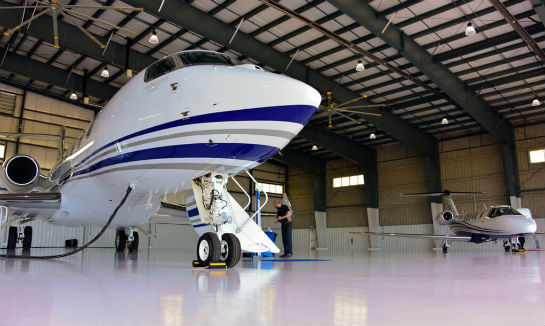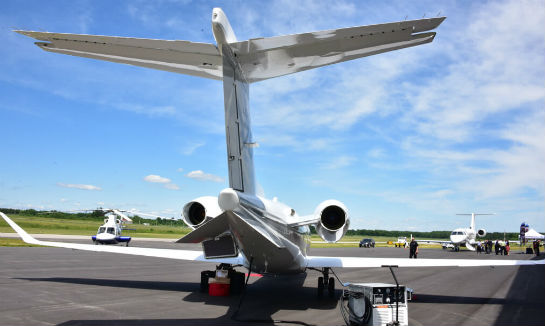Estimated reading time 6 minutes, 29 seconds.
CBAA’s president and CEO, Rudy Toering, has a clear message for airports, politicians and regulators. Mike Reyno Photo
As it prepares to present a study charting business aviation’s contribution to the Canadian economy, the Canadian Business Aviation Association (CBAA) has a clear message for airports, politicians and regulators.
“We have a very lucrative business that’s in place in Canada, and do not challenge that business by putting in restrictive regulations and restrictions for access,” said CBAA president and CEO Rudy Toering.
“Because you’re going to harm a $10.9 billion business.”
Toering made the remarks in a speech at a CBAA Ontario Chapter meeting on June 23, 2016, at the Lake Simcoe Regional Airport.
A number of aircraft were on display at the Lake Simcoe Regional Airport, including this Embraer Legacy 500. Mike Reyno Photo
He used the speech in part to preview an economic impact study scheduled to be presented July 7 at the CBAA 2016 Convention and Exhibition in Calgary, Alta.
The business aviation industry provides $10.9 billion in economic output, as well as $3.3 billion in wages across Canada and $5.2 billion in gross domestic product (GDP) contribution, said Toering.
“The message is that we represent the top 200-plus companies in Canada with their flight departments,” he added in an interview after the speech. “They use that to do business, and they grow their businesses. So they use the business aircraft as their tool to do that.
“Don’t impede that progress …. just because people are rich doesn’t mean that they need to be taxed to the hilt, or that the tools that they use….need to be taxed the way they are. The message to them is, don’t bite the hand that feeds you. Very clear.”
The CBAA has already made requests and voiced its opinion to the Canada Revenue Agency, said Toering. Now there are plans to go the political route, working with Members of Parliament.
“We expect that we will get some very good attention from the government because it’s important for them that our businesses are successful,” he said.
Business aviation is also part of a proposed regional approach to meet the rising demand for air travel in Southern Ontario.
Gulfstream made the hour and a half flight from its headquarters in Savannah, Ga., in its newest flagship, the G650ER. Mike Reyno Photo
As previously reported, demand for air travel will cause airports to start to approach capacity by the mid-2030s, according to the Greater Toronto Airports Authority (GTAA), which runs Toronto Pearson International Airport.
Paul Ritchi, senior manager of strategy development for the GTAA, spoke about the process at the CBAA event on June 23 and said after his speech that excellent progress is being made.
“There is a real sense that together we can do more than as individuals,” he told Skies.
“If we don’t do this, we’ll lose out in GDP in years to come, and therefore we believe it’s in our shared interest to work together to meet the needs proactively rather than reactively.”
The GTAA hopes to have a plan in place within the next 18 months, and Ritchi noted the group is already well down the road.
“It’s a matter of, what’s the structure we’re going to use,” he said. “How we’re going to communicate it, how we’re going to grow the collective business, as aviation continues to evolve.”
Lake Simcoe Regional Airport, about 20 kilometres northeast of Barrie, Ont., hopes to be a hub for business aviation as part of that regional plan.
“If somebody has a corporate jet and lives out in the Markham, Aurora, that type of area, we would be sort of the default corporate jet point,” said Martin Lamprecht, a business development consultant for the airport.
“Geography will always play a role, but in the big picture of the GTA [Greater Toronto Area], we are really positioning ourself as a premium VIP jet airport.”
Bombardier’s Lear 75 also made an appearance at the CBAA Ontario Chapter meeting. Mike Reyno Photo
As for the CBAA, it’s trying to make clear that business jets are tools for the companies that use them, not playthings.
“It’s not a rich boy’s toy,” said Toering. “It is a business tool that is being used very effectively by the many companies that use them.”
The CBAA’s economic impact study is to be presented at 9:30 a.m. on July 7, at Million Air Calgary as part of the national convention and exhibition.







